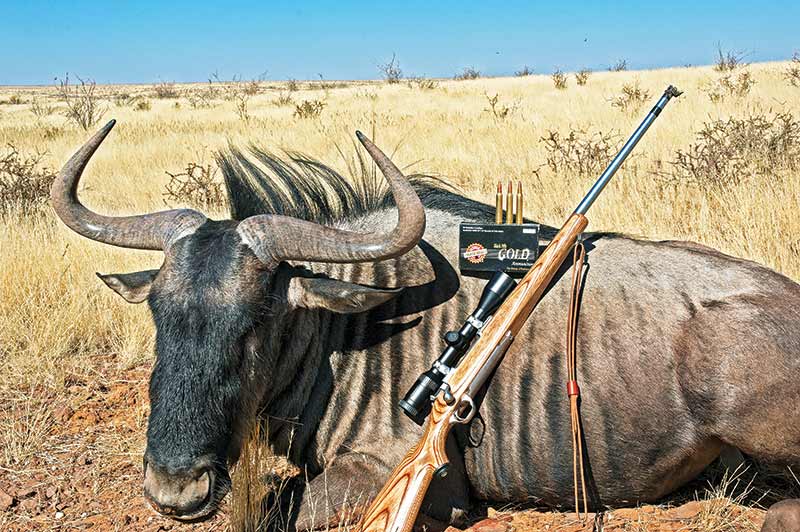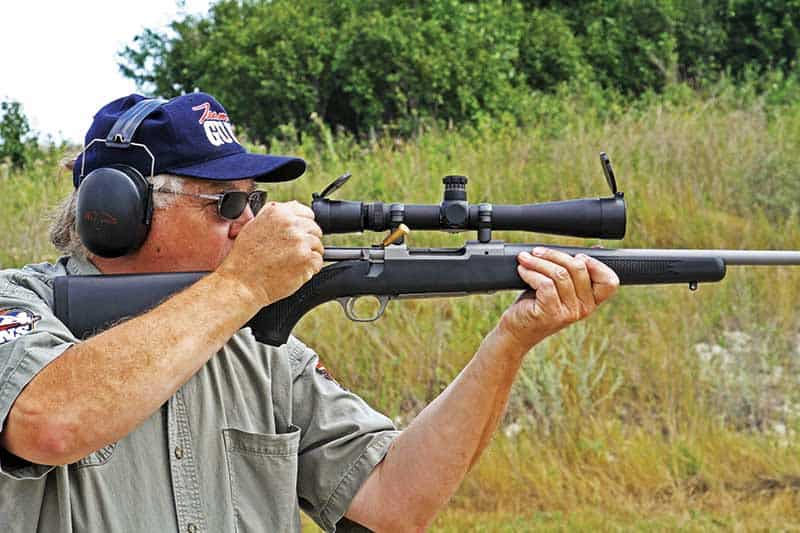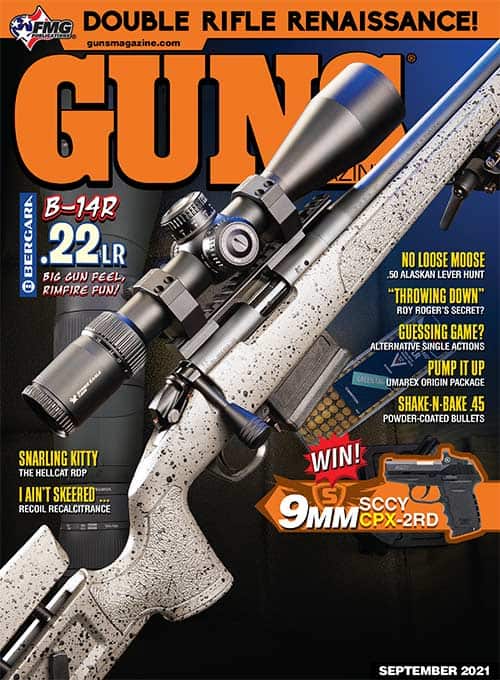Rifle Recoil
Is anybody honest about it?
What are the single biggest obstacles to accurate rifle shooting? Recoil and muzzle blast! If rifles didn’t kick and make a deafening noise, accurate shooting would be a lot easier but they do, and the more powerful the cartridge the greater the noise and recoil. Unfortunately, “more power!” is what many shooters need — or think they need.
Ego is another factor. Saying you dislike heavy recoil is kind of like saying you can’t drive a manual transmission. Everyone likes to say they aren’t bothered by recoil. Everyone lies. I know shooters who boast of their recoil tolerance but when I see them at the range they have 50 lbs. of lead stacked behind the rifle.
Take Stock
Fool me all you want, but don’t fool yourself. If you really want to find out, have a friend at the range load the rifle for you, leaving the chamber empty on occasion so you never know if the rifle is going to fire or not. When the firing pin clicks on an empty chamber after a string of live rounds, you’ll know. If you really can handle it the sight picture will remain steady. If not … I’ve seen people with both eyes closed, face pulled away from the stock and contorted in a grimace. If shooting offhand sometimes they’ll actually stumble forward a step or two.
I used to find it flattering when people would ask for advice on purchasing a hunting rifle. I quickly got over it when I found they paid no attention. At least half a dozen young relatives told me they were thinking of a .300 Magnum as their first hunting rifle. I’d ask what they planned to hunt. Deer, mostly, antelope and black bear, maybe elk or moose one day. Got to have a .300 for elk.
I’d say a .300 Magnum is a bit much for a novice shooter. Get a cartridge you’ll enjoy shooting, something like a .243 Win., .260 Rem., 7mm-08 Rem. If you go elk hunting someday and really feel you need a .300, I’ll lend you one.
They listen politely and then get .300 Win. Mags. or a .300 WSM. My nephew Mike got my usual advice. A couple of weeks later he showed up with a handsome Winchester 70 Featherweight .300 Win. Mag. I helped fit and bore-sight a scope. After a couple of shots at 25 yards to get on paper he shot a nice 1″ three-shot group at 100 yards. I was impressed with both the rifle and his shooting.
The next group wasn’t an inch, in fact it wasn’t even three shots. After two shots about 5″ apart — and neither where they should have been — he said, “You know what, uncle, I don’t want to shoot anymore today.” I was impressed again, because he had the good sense to quit before a flinch could get a foothold.
Then …
A couple of months later Mike showed up again with another new rifle. It was a Weatherby Vanguard he got on sale. The cartridge? .243 Win. His shooting with it was outstanding. He called a few weeks later to say how much he enjoyed shooting it. He still planned on using his .300 for hunting, although he asked if I thought the .243 would do for deer hunting. I said, “You know, I think it just might.”
Previously I’ve written the .300 Win. Mag. is one of my favorite hunting cartridges. I’ve shot more species of big game with it than any other cartridge. So am I being a hypocrite now? Maybe a little, but there’s a qualification. Of several .300 Win. Mags. I own, the most-used is a Ruger 77 Sporter, stainless steel, with a fairly heavy barrel. The stock is a heavy brown laminate. With scope, rings, leather shooting sling and loaded magazine, it weighs over 9-3/4 lbs.
With factory Black Hills Ammunition loads using Barnes TSX bullets at 2,950 fps, recoil is about like an 8-lb. .308 or .30-’06. I can shoot this rifle with the same hold I’d use on a .223 or .243. Recoil energy computes to about 24 ft.-lb. From the bench, sighting in or testing loads I can shoot 20 to 25 shots in a session without feeling any recoil fatigue.
These days I like light rifles and to keep recoil tolerable I like lighter cartridges. With bullets like the Barnes TTSX, Hornady ELD, Nosler Accubond, lighter cartridges perform like the heavyweights of old. Current favorite deer cartridges include .243 Win., .240 Wby., .250 Savage, 6mm and 6.5mm Creedmoor. I was so impressed with the Creedmoor I got a Tikka T3 in 6.5×55. I’ve used Hornady 143-grain ELD-X bullets to kill six deer with six shots.
Other factors influence recoil such as stock fit, recoil pad, muzzle brakes, suppressors and ear protection to reduce muzzle blast. For now though, consider the benefits of a pleasant, light recoiling rifle. If you really want to get good with a centerfire nothing beats a handy sporter-weight bolt action .223!






